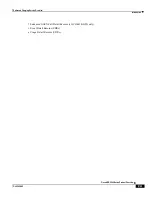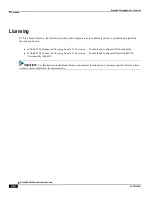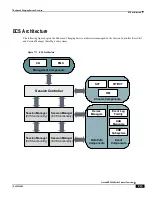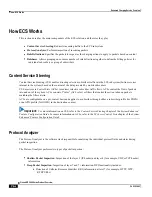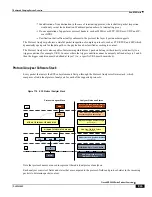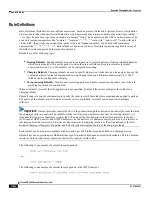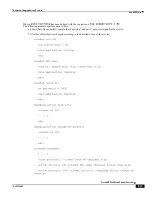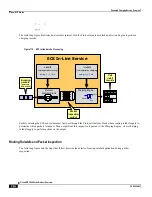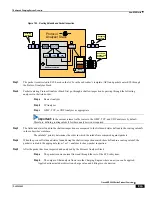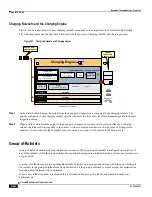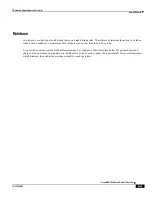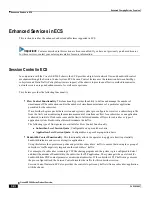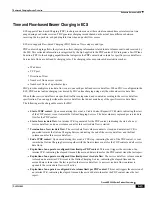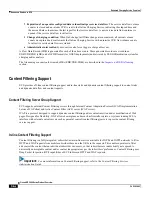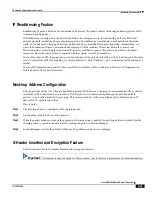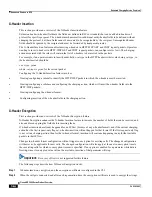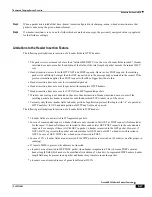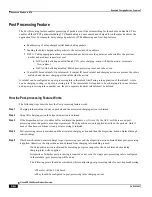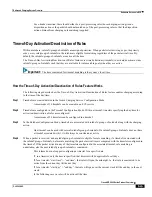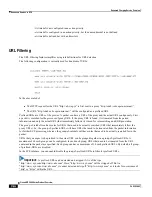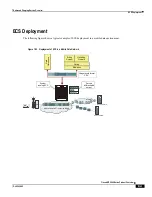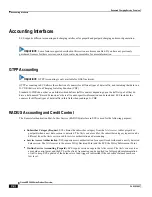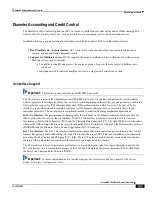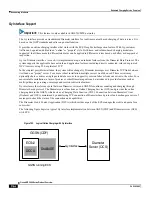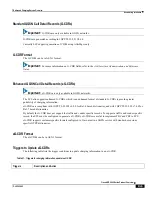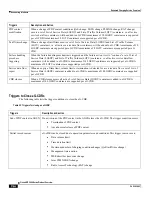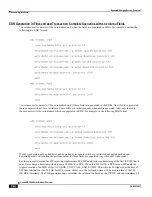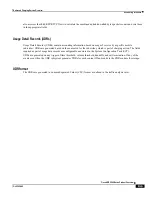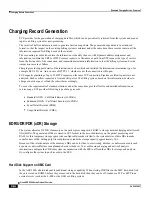
Enhanced Charging Service Overview
Enhanced Services in ECS ▀
Cisco ASR 5000 Series Product Overview ▄
OL-22938-02
IP Readdressing Feature
Readdressing of packets based on the destination IP address of the packets enables redirecting unknown gateway traffic
to known/trusted gateways.
IP Readdressing is configured in the flow action defined in a charging action. IP readdressing works for traffic that
matches particular ruledef, and hence the charging action. IP readdressing is applicable to both uplink and downlink
traffic. In the Enhanced Charging Subsystem, uplink packets are modified after packet inspection, rule matching, etc.,
where the destination IP/port is determined, and replaced with the readdress IP/port just before they are sent out.
Downlink packets (containing the readdressed IP/port) are modified as soon as they are received, before the packet
inspection, where the source IP/port is replaced with the original server IP/port number.
For one flow from an MS, if one packet is re-addressed, then all the packets in that flow will be re-addressed to the same
server. Features like DPI, rule-matching, etc. remain unaffected. Each IP a port combination will be defined as a
ruledef.
In case of IP fragmentation, packets with successful IP re-assembly will be re-addressed. However, IP fragmentation
failure packets will not be re-addressed.
Next-hop Address Configuration
ECS supports the ability to set the next-hop default gateway IP address as a charging action associated with any ruledef
in a rulebase. This functionality provides more flexibility for service based routing allowing the next-hop default
gateway to be set after initial ACL processing. This removes need for AAA to send the next-hop default gateway IP
address for CC opted in subscribers.
How it works:
Step 1
The next-hop address is configured in the charging action.
Step 2
Uplink packet sent to ECS is sent for analysis.
Step 3
When the packet matches a rule and the appropriate charging action is applied, the next-hop address is picked from the
charging action is copied to the packet before sending the packet to Session Manager.
Step 4
Session Manager receives the packet with the next-hop address, and uses it accordingly.
X-Header Insertion and Encryption Feature
This section describes the X-Header Insertion and Encryption features.
Important:
This feature is license dependent. Please contact your local sales representative for more information.
Summary of Contents for ASR 5000 Series
Page 1: ......
Page 26: ......
Page 48: ...New In Release 10 0 SCM Features Cisco ASR 5000 Series Product Overview OL 22938 02 ...
Page 50: ......
Page 58: ......
Page 68: ......
Page 126: ......
Page 138: ......
Page 146: ......
Page 218: ......
Page 236: ......
Page 356: ......
Page 374: ......
Page 422: ......
Page 496: ......
Page 572: ......
Page 654: ......
Page 700: ......
Page 726: ......
Page 784: ......
Page 816: ......
Page 844: ......
Page 906: ......
Page 926: ......
Page 942: ......
Page 943: ...Cisco ASR 5000 Series Product Overview OL 22938 02 Chapter 30 Technical Specifications ...
Page 966: ......
Page 972: ......

